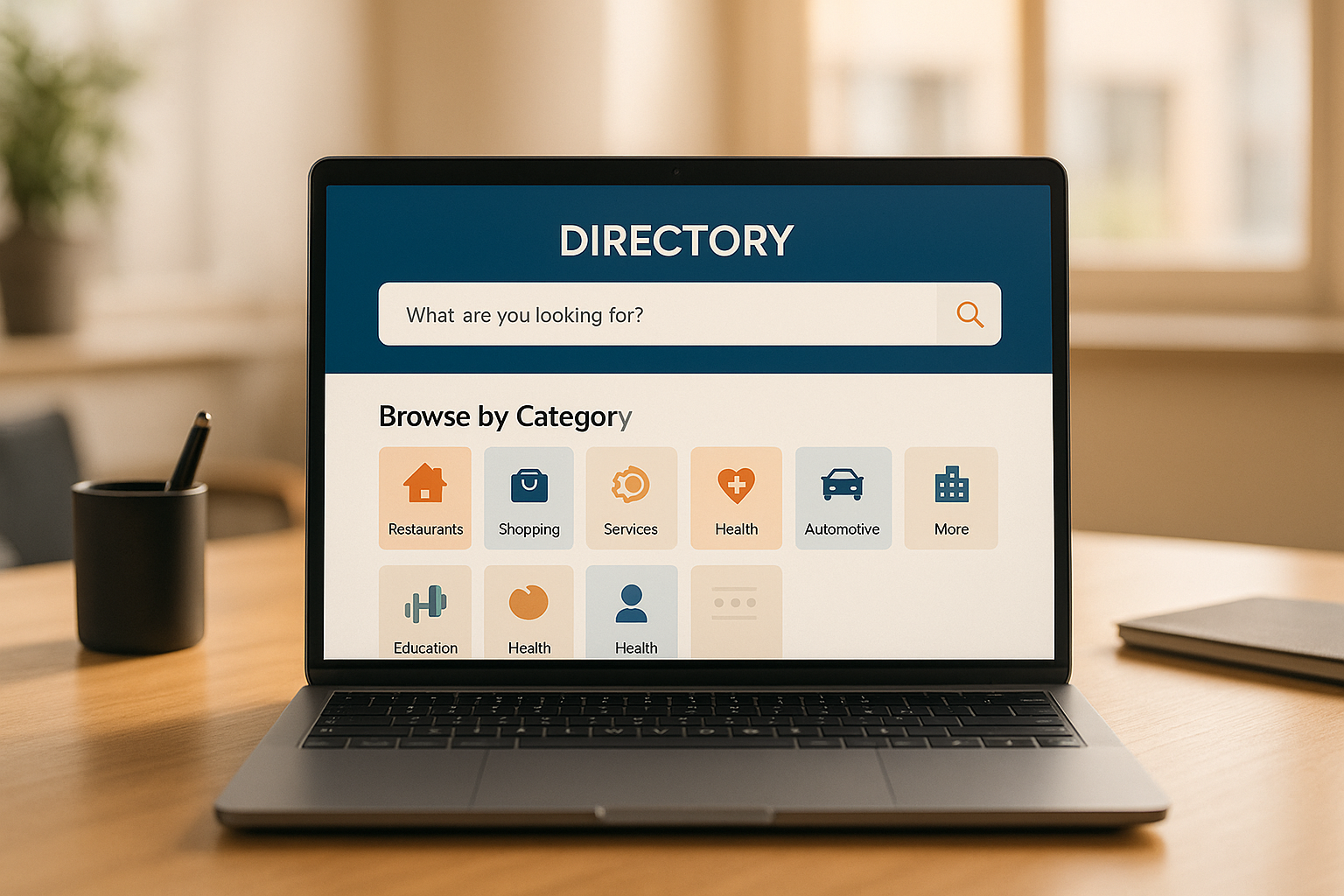
Want to boost your directory website's visibility in local search results? Here's how you can optimize your site for local SEO:
Tools like Directify can simplify this process with features like automated sitemaps, structured data, and performance tracking. Start implementing these steps today to attract more local traffic and grow your directory website.
Build a strong technical foundation for local SEO by focusing on these key areas:
Since most local searches happen on mobile devices, it's crucial to optimize your site for smaller screens. Pay attention to:
If you're using Directify, its mobile-friendly themes handle these adjustments for you.
Having a custom domain boosts your site's credibility in local searches. Here's how to set it up:
Choose a relevant domain name
Examples include:
Connect your domain
Verify everything works
Sitemaps help search engines index your site efficiently. Here's what to do:
Include essential pages
Add pages like your homepage, category pages, location landing pages, and business listings.
Follow best practices
Use XML format, include modification dates, set priorities, and keep the sitemap under 50,000 URLs.
Keep it updated
Update your sitemap weekly, remove outdated pages, add new ones, and confirm indexing.
Directify simplifies this process by automating sitemap creation and updates, ensuring your site stays optimized for local search visibility. With these basics in place, your site will be ready for more advanced local SEO strategies in the next steps.
Creating content tailored to specific locations is key to improving local search rankings. Here's how you can do it:
Create individual pages for every location, featuring relevant stats, categories, guides, and events. These pages should include:
Location landing pages
Custom URL structure
Use URLs that reflect the location and category, such as:
yourdomain.com/city-name/category
yourdomain.com/state/city-name/business-type
Directify's custom page builder simplifies the process of creating and managing these location-specific pages. You can add as many as needed without any coding skills, making it easy to organize your directory by geography.
Once your pages are set up, it's time to optimize them with precise local keywords.
Incorporating local keywords helps search engines identify the geographic focus of your content. Use them in the following areas:
Title tags
Best [Category] in [City Name], [State] - Directory Name
[Business Type] Near [Neighborhood] - Directory Name
Meta descriptions
Include details like:
Content body
Naturally weave location-specific terms into:
After optimizing for keywords, take your listings to the next level with structured data.
Structured data makes your listings stand out in search results. Include the following:
Business information
Add key details like:
Location data
Provide geographic markers, such as:
Directify automatically generates structured data markup for your listings. This ensures your content is displayed correctly in local search results, complete with enhanced visual elements.
Improving your local search presence starts with building strong local business listings. Here's how you can do it:
Submit your business details to trusted local directories. Include essential information like:
Tools like Directify make it easier to monitor and update your listings across multiple directories. Once you've added your details, double-check that everything stays consistent.
Keep your business name, address, and phone number the same across all directories. This consistency helps both your customers and search engines find accurate information about your business.
Directify also offers tools to manage and update your listings from one central platform.
Once you've optimized your site and content, it's time to keep an eye on your progress. Monitoring helps ensure your local visibility stays strong and provides insights for making improvements.
Take advantage of Directify's SEO tools to measure your local search performance. Check your pSEO pages, sitemaps, and rich snippets to make sure your content is reaching the right audience.
Keep an eye on your search rankings and use performance data to fine-tune your strategy as needed.
Go through the checklist above and start putting these strategies into action.
Take advantage of these local SEO methods today. By setting up your custom domain through Directify's management system, you can enhance your professional image and improve local search rankings.
Here’s how Directify's SEO toolkit can help:
Directify supports over 1,000 SEO-optimized directories. Utilize its integrated tools to implement the checklist strategies and boost your directory's local search performance.
Keep improving your approach by regularly reviewing performance metrics with Directify's tools.
Start creating your professional directory website today with Directify's no-code platform.
Get Started Free





